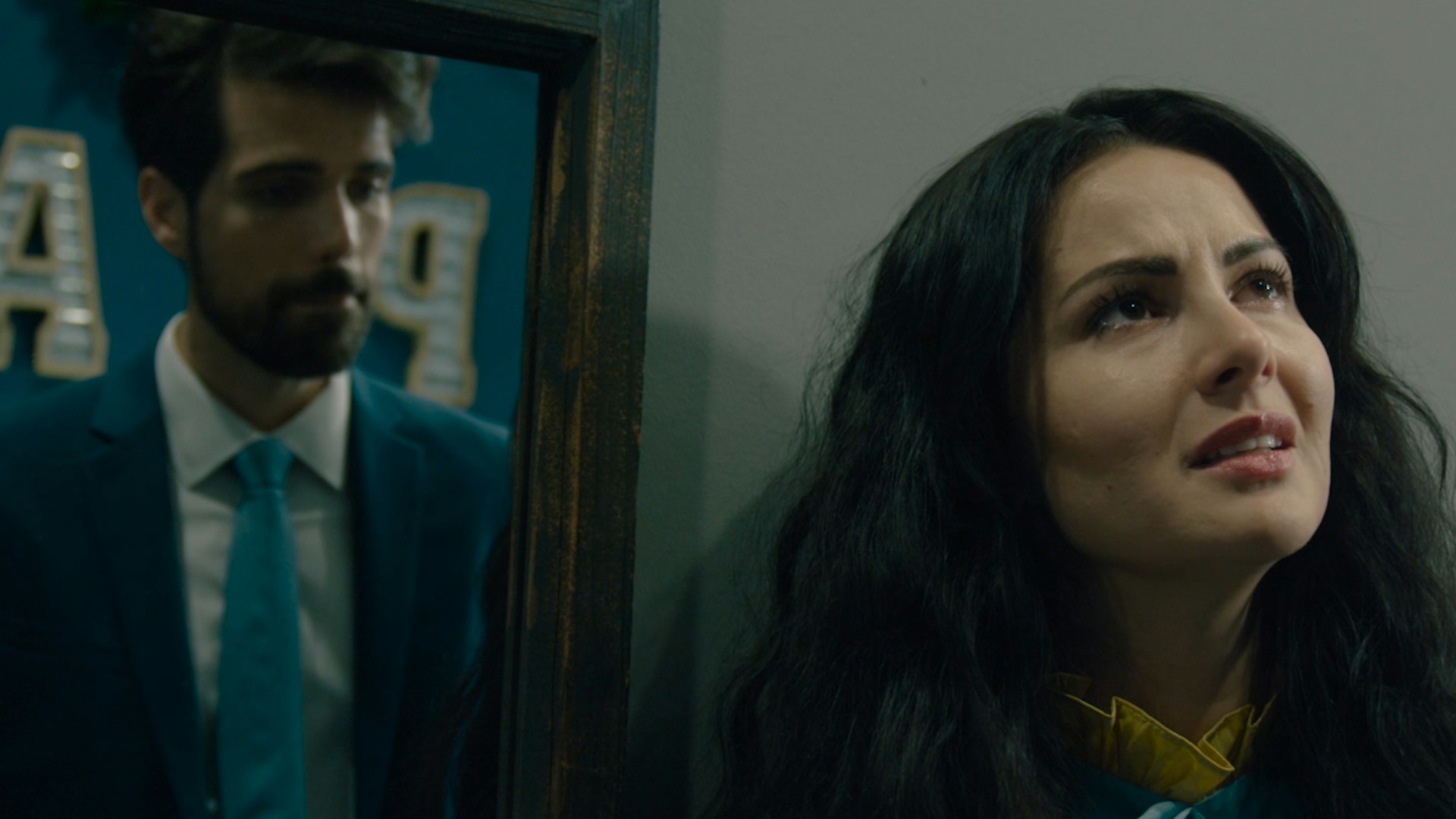Heir of the Witch (2024)
Is a haunting supernatural horror film that delves deep into generational trauma, folklore, and the psychological toll of inherited evil. Written, directed by, and starring Victoria U. Bell, the film follows the story of Anna, a Moldovan-American seamstress plagued by the belief that her family is cursed. Set against a backdrop of Eastern European mysticism and steeped in cultural superstition, the film offers a chilling exploration of identity, legacy, and the darkness that runs in bloodlines.
At the heart of the film is the legend of the Strigoaică—a female vampiric witch from Romanian folklore said to rise from the grave seeking vengeance. Anna, orphaned and emotionally fragile, is convinced that her grandmother’s pact with dark forces has doomed her. Her days are spent caring for her dying aunt and enduring the arrogance of wealthy clients, but her nights are consumed by disturbing visions, nightmares of graveyards, whispers from beyond, and the feeling of being watched. These haunting experiences escalate as people around her begin to die under mysterious and violent circumstances.

Anna’s attempt to find solace in a forbidden romance with Nicholas, a charming married man from her social circle, only intensifies the curse’s grip on her life. What begins as a flicker of hope quickly spirals into a series of horrifying events. The more Anna tries to escape her family’s legacy, the more entangled she becomes in its deadly consequences. The story blurs the line between psychological breakdown and supernatural possession, leaving viewers questioning what is real and what is born of trauma and guilt.
Victoria U. Bell’s performance as Anna is deeply emotional and layered. She brings authenticity to the character’s torment, effectively portraying the fear, confusion, and despair that come with believing one’s soul is marked by a familial curse. Bell’s direction complements her performance, weaving in eerie visuals, whispering soundscapes, and unsettling imagery to sustain an atmosphere of dread throughout the film.

Visually, the film leans into gothic aesthetics with candlelit interiors, fog-drenched cemeteries, and shadowy figures that linger just out of frame. The sound design enhances the unease with subtle creaks, distorted voices, and echoes that suggest a presence just beyond perception. These elements, combined with the film’s deliberate pacing, contribute to its psychological horror tone rather than relying on jump scares.
Critics have had mixed reactions to Heir of the Witch. Some praised its bold vision, cultural authenticity, and emotionally driven narrative, while others pointed to uneven pacing and tonal shifts that occasionally clash with its indie-budget limitations. Nonetheless, the film’s ambition and originality have earned it recognition among fans of folklore-based horror.

In conclusion, Heir of the Witch stands out as a unique entry in the horror genre, offering a tale that is both intimate and terrifying. It explores the idea that trauma, particularly when tied to cultural and familial roots, can feel like a curse that never fades. While not a perfect film, it succeeds in creating a memorable and atmospheric experience that lingers long after the credits roll.



